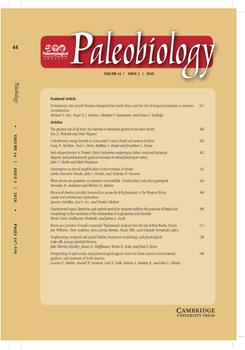Certain taxa are noticeably common within collections, widely distributed, and frequently long-lived. We have examined these dominant genera as compared with rarer genera, with a focus on their temporal histories. Using occurrence data from the Paleobiology Database, we determined which genera belonging to six target groups ranked among the most common within each of 49 temporal bins based on occurrences. The turnover among these dominant taxa from bin to bin was then determined for each of these groups, and all six groups when pooled. Although dominant genera are only a small fraction of all genera, the patterns of turnover mimic those seen in much larger compilations of total biodiversity. We also found that differences in patterns of turnover at the top ranks among the higher taxa reflect previously documented comparison of overall turnover among these classes. Both dominant and nondominant genera exhibit, on average, symmetrical patterns of rise and fall between first and last appearances. Dominant genera rarely begin at high ranks, but nevertheless tend to be more common when they first appear than nondominant genera. Moreover, dominant genera rarely are in the top 20 when they last appear, but still typically occupy more localities than nondominant genera occupy in their last interval. The mechanism(s) that produce dominant genera remain unclear. Nearly half of dominant genera are the type genus of a family or subfamily. This is consistent with a simple model of morphological and phylogenetic diversification and sampling.
How to translate text using browser tools
2 July 2018
The greatest hits of all time: the histories of dominant genera in the fossil record
Roy E. Plotnick,
Peter Wagner
ACCESS THE FULL ARTICLE

Paleobiology
Vol. 44 • No. 3
Summer 2018
Vol. 44 • No. 3
Summer 2018




